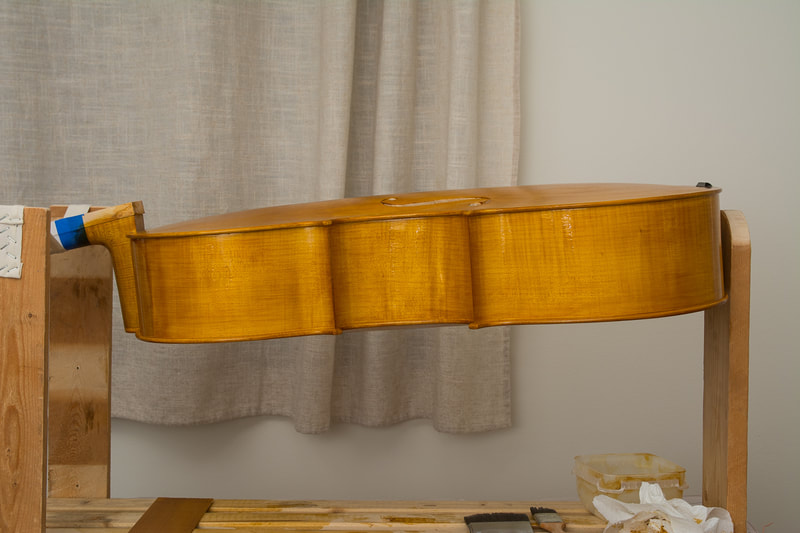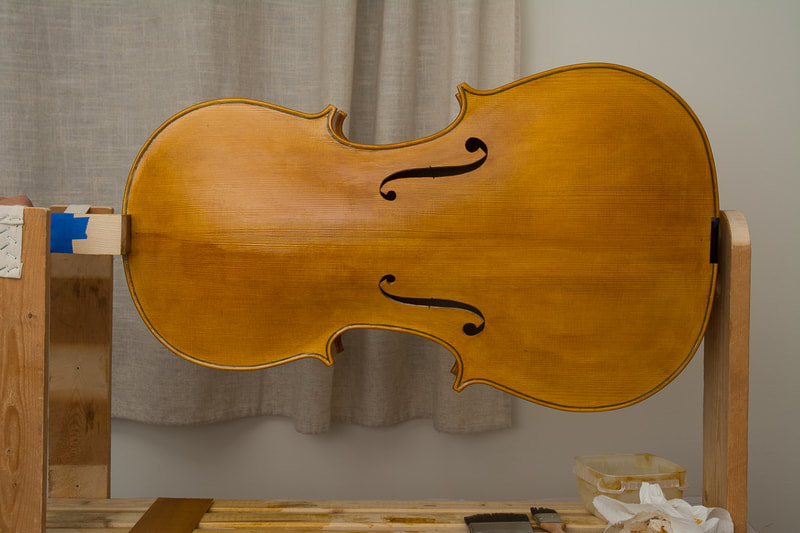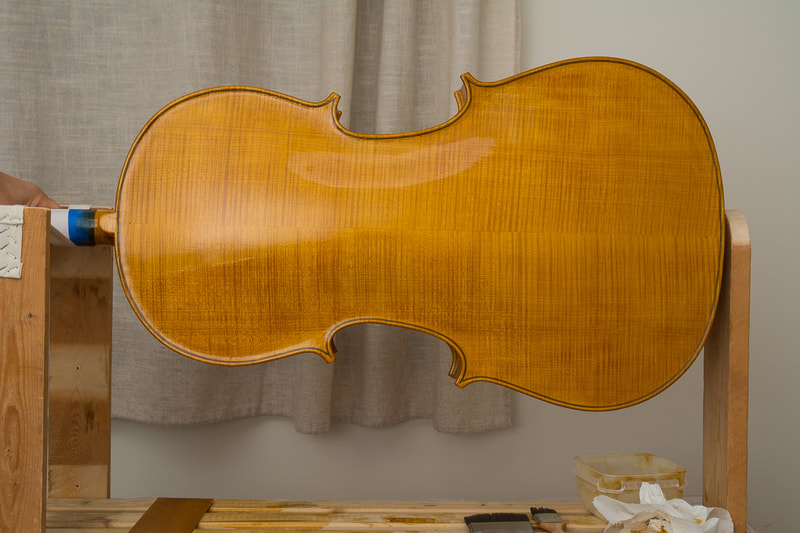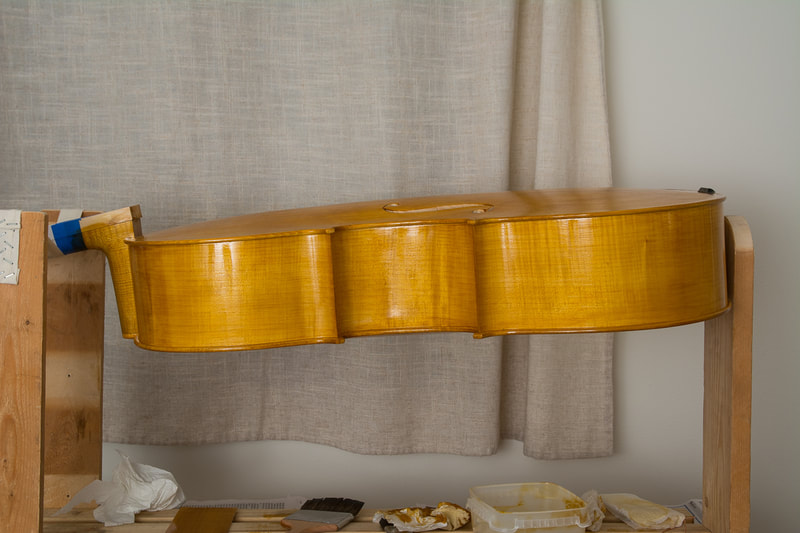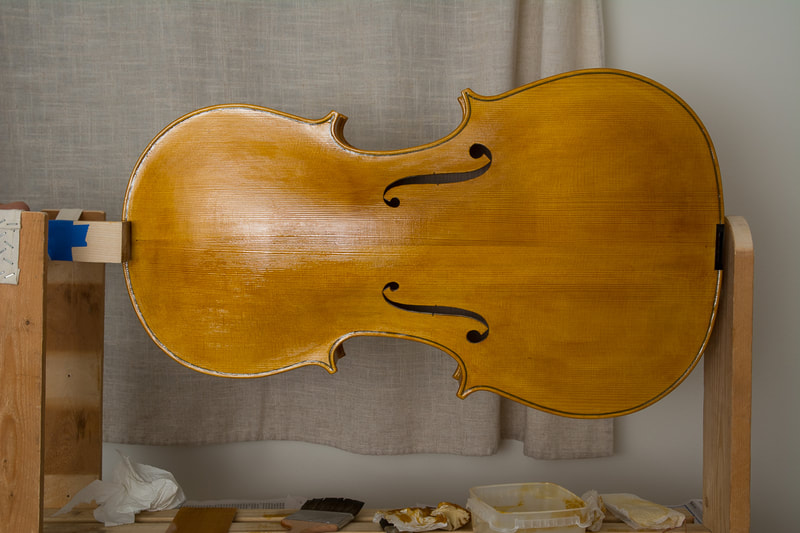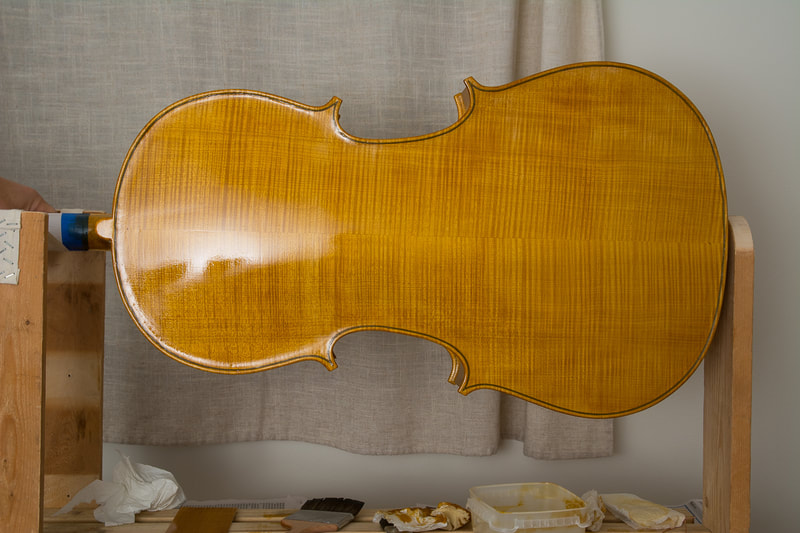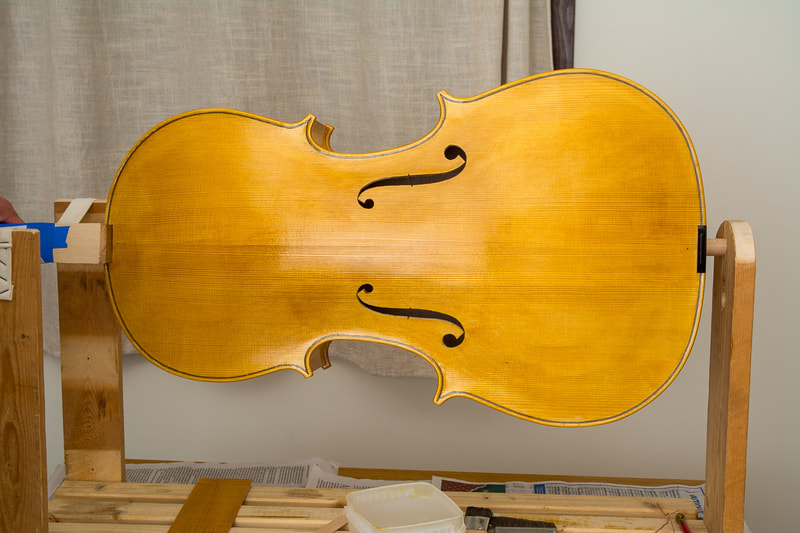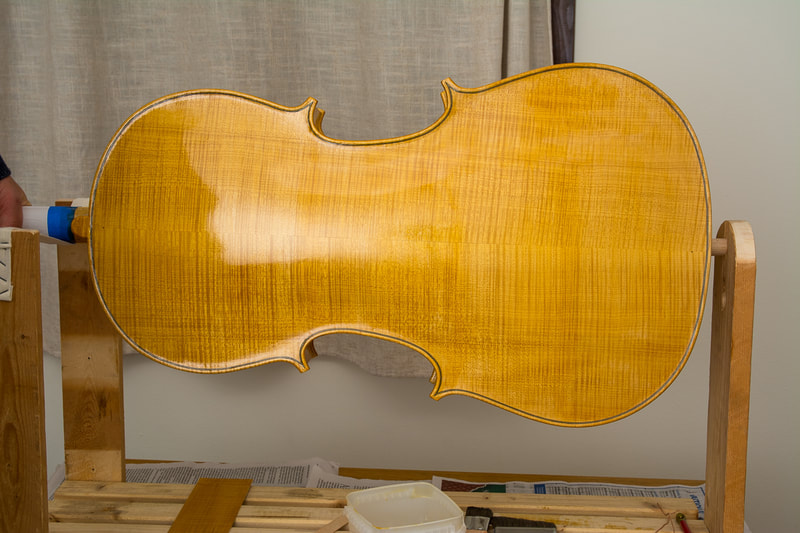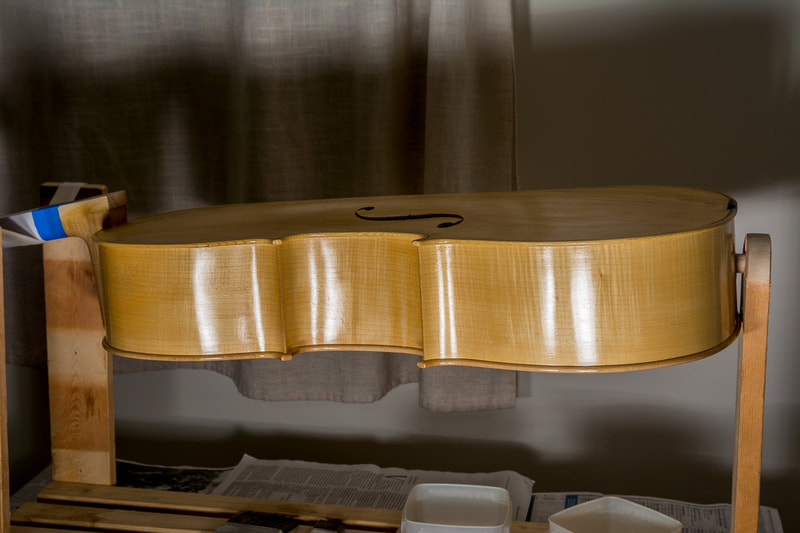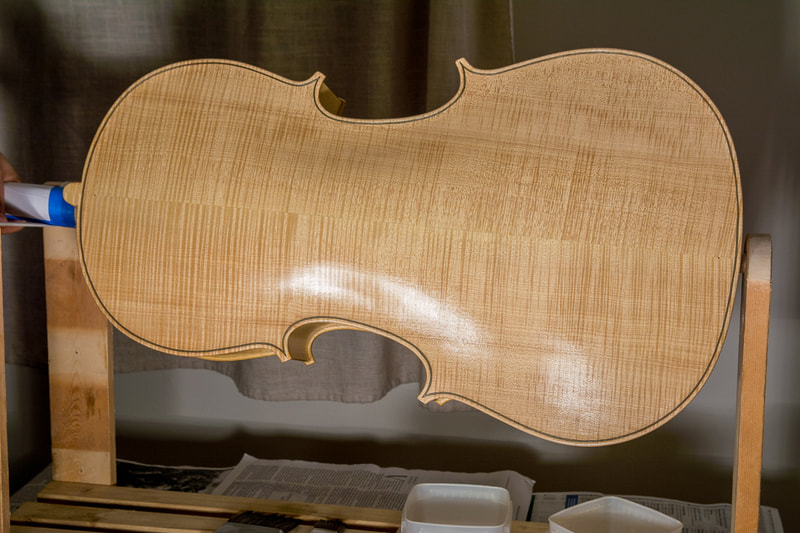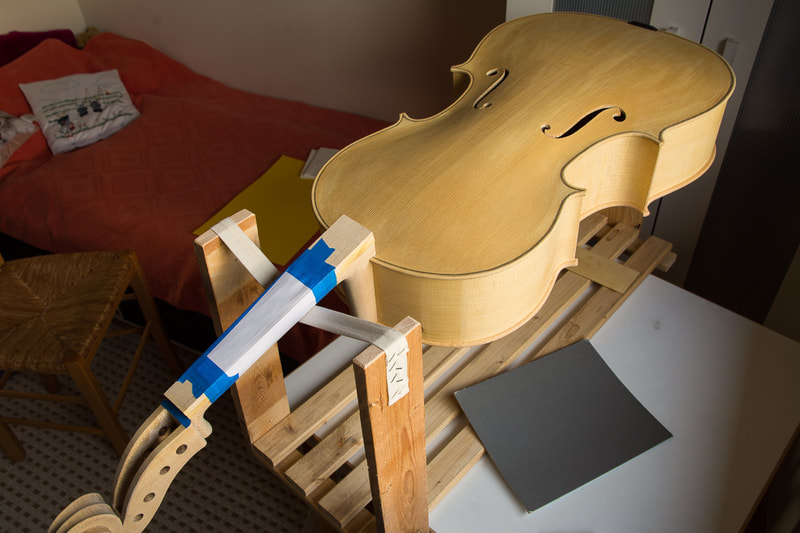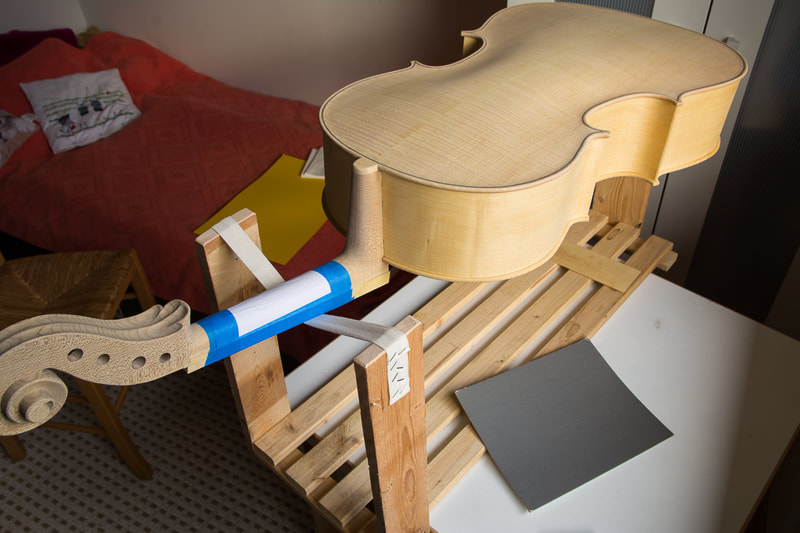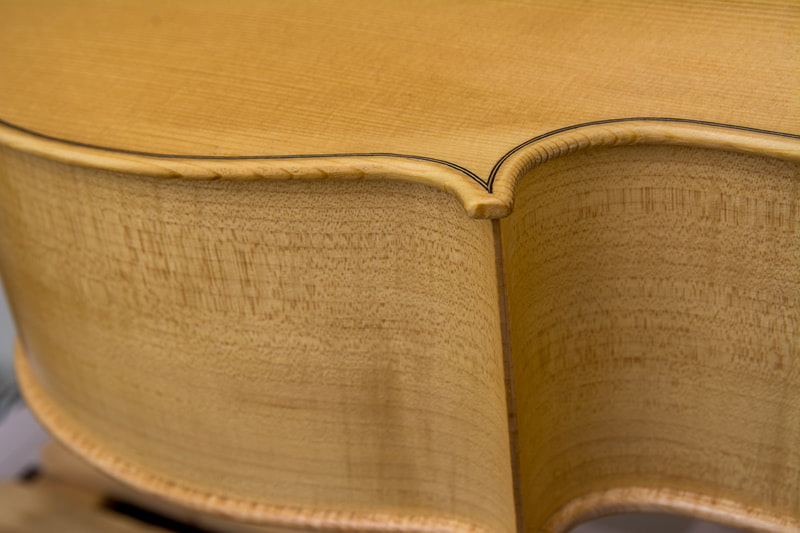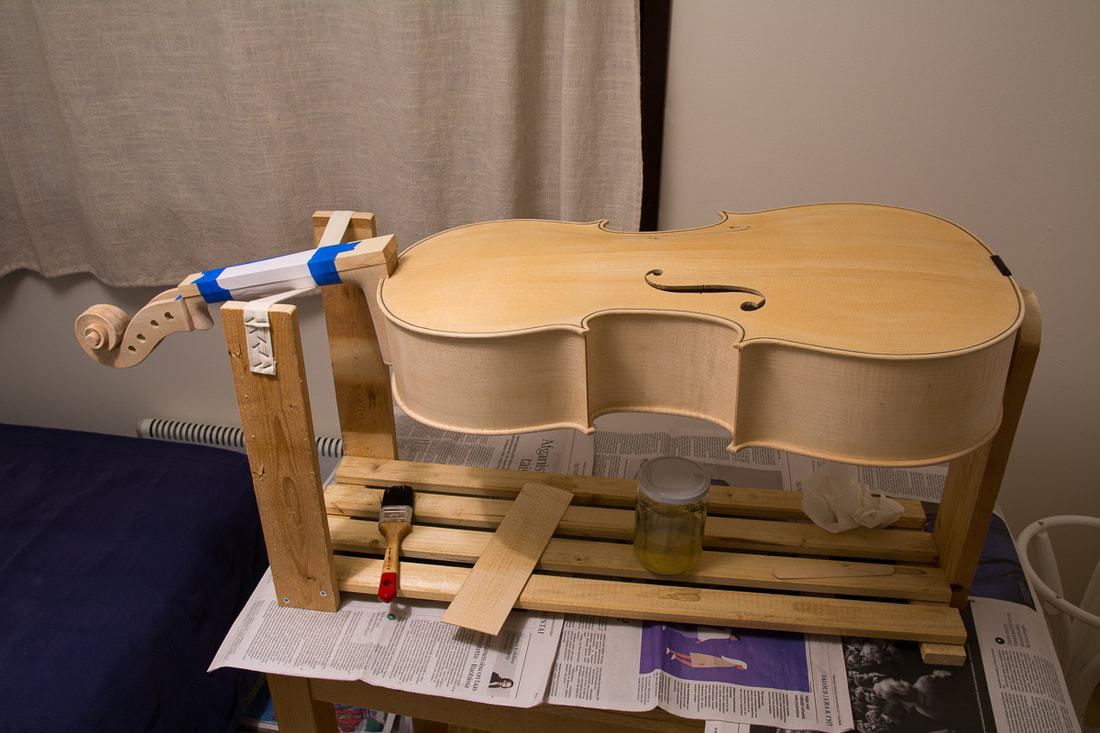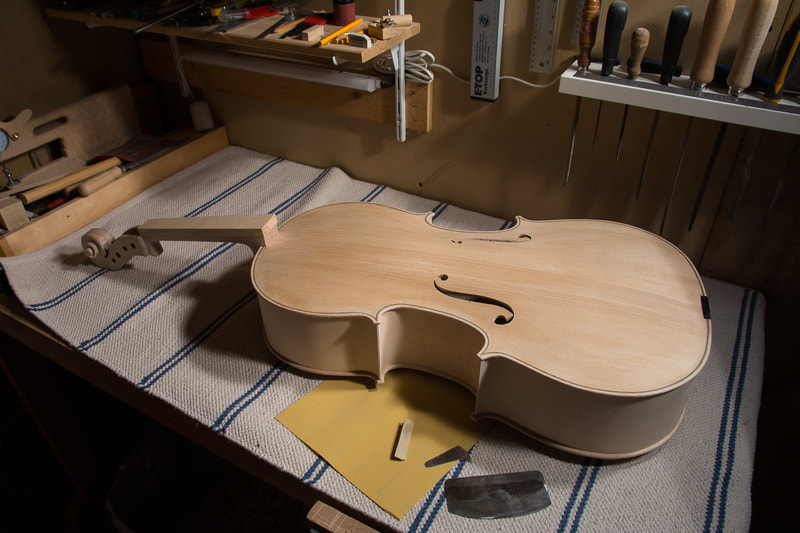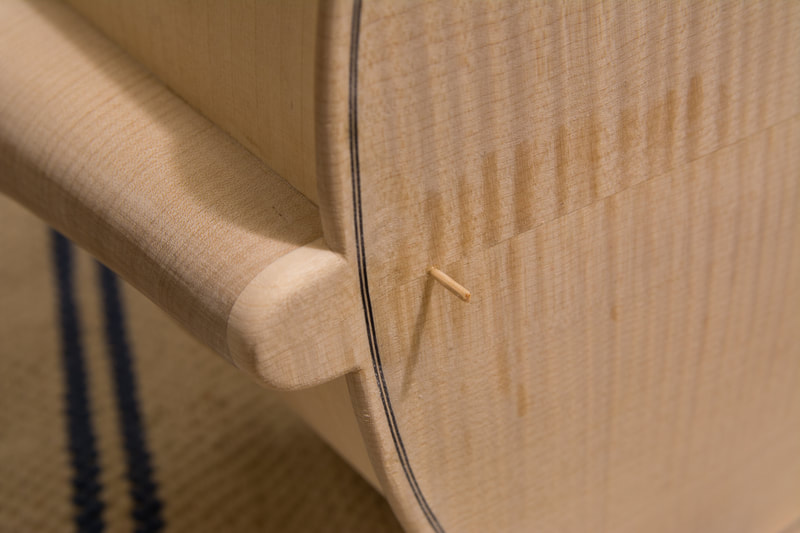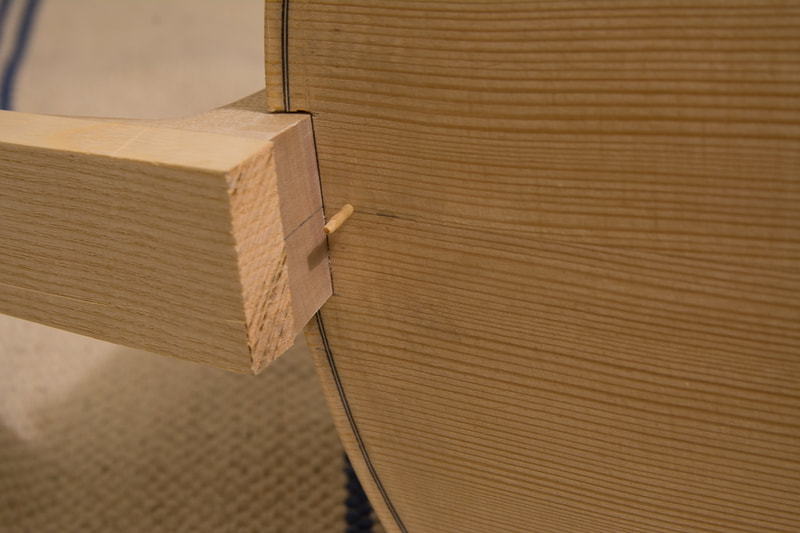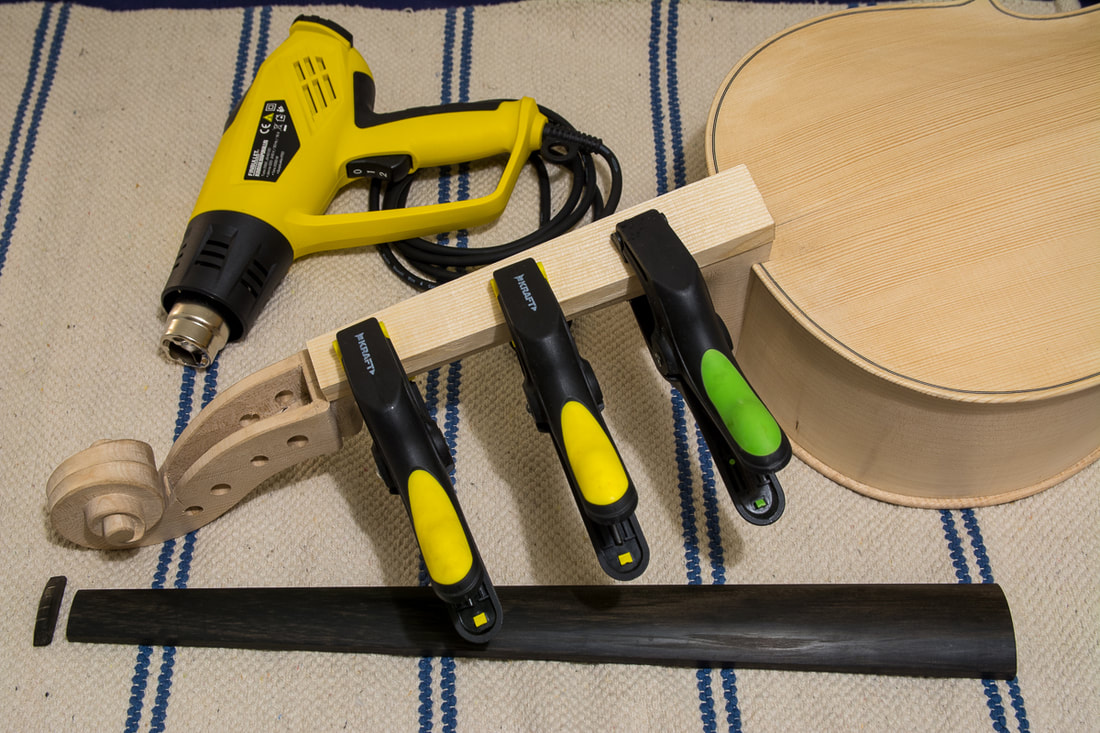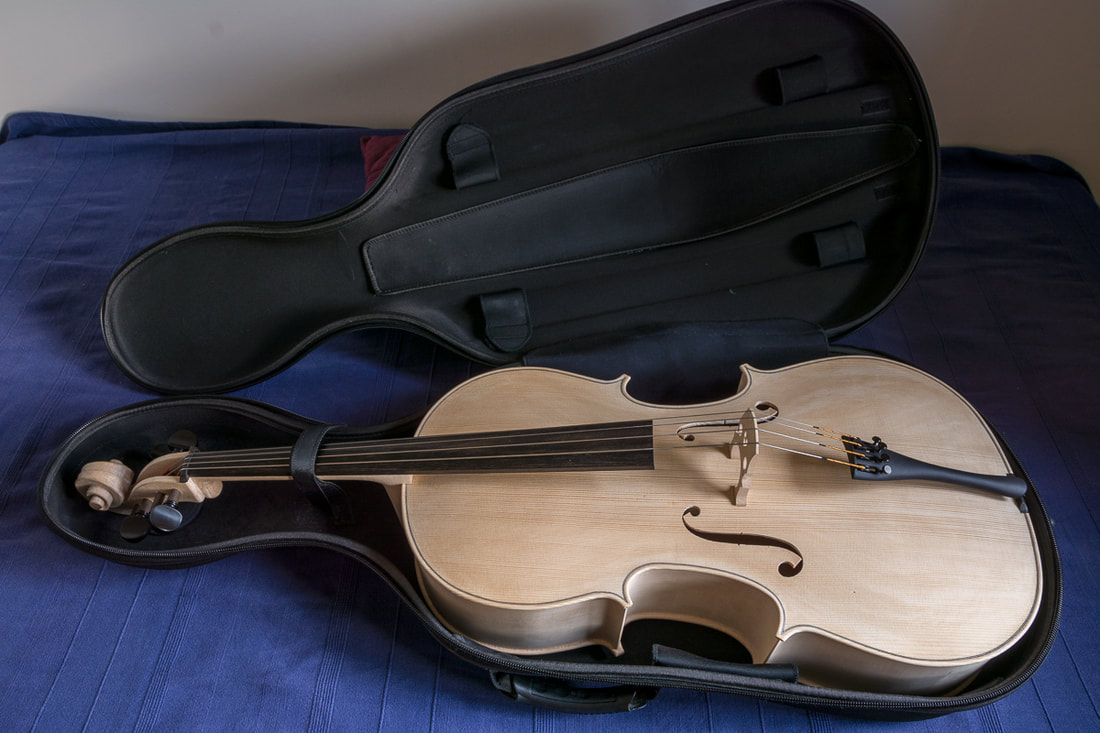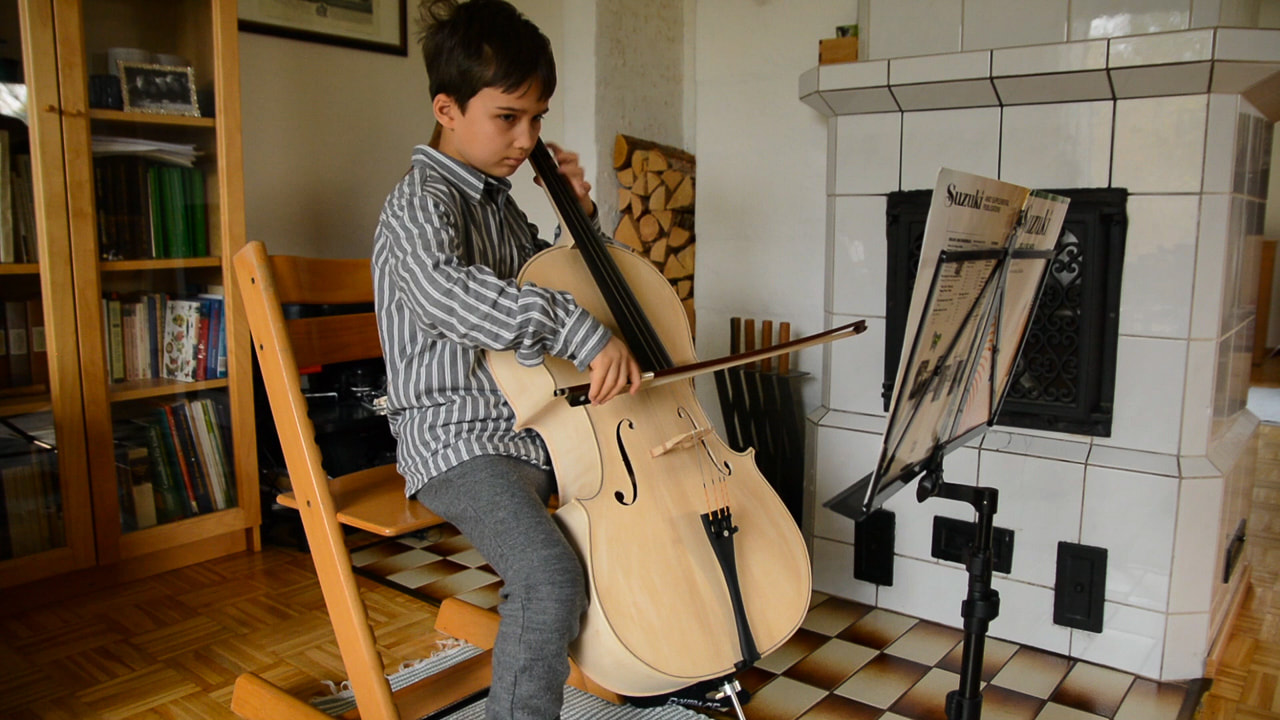|
I will try to put a coat per day now. The varnish really seems to dry almost instantly but I don't dare to put more than one a day, at least yet. The colour is getting better all the time. Now with three coloured layers one can still nicely see the figure of the wood so I am not too worried about the varnish covering up too much.
0 Comments
After a couple of days of waiting I could continue again. As usual, I first sanded down the first coloured layer with with a linen cloth dipped in water and then in rottenstone. Then the second layer of coloured varnish went on. I think the colour is shifting toward a browner shade which is nice. I am struggling a little with the evenness of the colour, I hope adding more layers will help with that.
The first coloured layer is on! I had chosen amber as the colour for the varnish. I hope it gets a lot browner later on like the amber example on Hammerl website.
I started by sanding the cello with a linen cloth dipped in water and then in rottenstone powder. It was trickier than I though. The paste got stuck in some places and was a little tricky to get away. Maybe I used too much of it. The coloured varnish also was tricker than the clearer primer. With a couple of more coloured layers I hope it will all look good. Now it needs to dry for a few days before the next layer can be put on. This is also something I do not quite understand. The instructions mention a thumb test where one presses on the varnish with a finger and if one can see a finger print, the varnish hasn't dried enough. Now with just a few coats the varnish is dry in a few hours already. On the other hand it also mentions 2-3 days. Anyways, I will now let it dry properly, maybe with the next layers I will not wait so long. The first layer of primer needed to dry 12 hours. Before putting the second layer on, I sanded the whole cello with the included sandpaper (400 grit). The second layer went on pretty well. But it does dry very quickly and trying to correct anything later on is not possible. Luckily I didn't need to, I just noticed that very shortly the varnish is a sticky film and should be left alone.
Already the first layers of varnish have made the surface nice and shiny which really bring out the nice flaming of the back. The front has a little uneven colour. I think it was a bit visible already before, but I couldn't get rid of it. I hope the coloured varnish will hide the imperfections. Before the first coloured layer can go on, I need to smoothen the surface with rottenstone powder and water first. Today I managed to put the stain and the first layer of varnish (primer). The stain is put on and then the cello is left in the sun light for 2-10 hours according to the instructions. The colour of the stain changes in the light and once the desired colour has been achieved the first layer of varnish is on. I assume that the layer of varnish stops the stain from changing colour. I left the cello by the window for 6 hours. I actually didn't see too much change in the colour after the first 20 minutes. Maybe the winter sun in Finland just isn't strong enough. Anyways, I thought it would be better to have too light a colour than too strong.
The varnish wasn't too bad to put on. I have read so much about the difficulty of spirit varnish that I was expecting it to be a lot trickier. The first layers of primer are pretty clear so that probably also makes it easier. Anyways, I managed to put the first layer on without it running or needing to go over the same spot many times. I am glad I still have another layer of the primer to put on to practice my varnishing skill. I started with the varnishing today. As I mentioned already in an earlier post, I am using the Spirit varnish kit from Hammerl, and will follow the instructions as is. The first step in varnishing is the "ground". There seem to be very many ways to do this. The kit includes a small pouch of gelatine which is dissolved in water. First the gelatine is mixed with water and let to stand for a while. Then it is gently heated until the gelatine has completely dissolved and then thinly applied on the cello. Now the cello needs to dry. The next step is to stain the cello.
I went around the cello with a scraper and some sand paper. I first sanded the cello all over with fine sand paper. Then I re-defined the edges with a scraper, especially around the scroll. I also noticed that I hadn't plugged all the alignment pin holes so I did that too.
Now I really have no reason not to start the varnishing. In order to prepare for the varnishing, it is now time to take the fingerboard off. t was only provisionally glued with a little weak hide glue. I warmed up the spots with the glue with a heat gun and the glue just gave up. I've never done that before. But I am starting to understand why some people insist in using hide glue. It holds strongly but can be removed if the piece needs repairing. Violins and cellos but this applies equally furniture etc. I think the next time I build something other than a cello, I will also see how hide glue would work.
After the fingerboard was off, I glued a false fingerboard on. It protects the edges and surface of the neck, and also ensures the neck stays flat and true. Once the glue has set I will once more go over the whole cello and make sure the surface finish is nice. That is done mostly with a sharp scraper to leave a nice crisp appearance. Sandpaper used only sparingly where appropriate. Now that the cello looks like a cello, it is also time to get a case for it. We decided to go with a light weight version so that Elias can carry it easily.
This is a capture of the third time Elias played the new cello. I can't put videos here in this blog so a photo will have to do. Elias seems to be happy with the size of the cello as well as the size and shape of the neck and fingerboard etc. So that is great news.
Elias played the cello for the first time yesterday. After having put the strings, we tuned it together. He was really excited about that, and of course so was I. After the cello was prepared he played the Gavotte by F. J. Gossec. It was really quite an emotional moment and the whole family looked at Elias and the cello in amazement. It sounds like cello! I had tried to put the sound post and bridge etc. in the correct places as defined by some millimetres I found in books. I didn't attempt anything more fancy than that. I am very happy with the sound. It is a great relief to know it doesn't sound awful. Interesting hear how people who actually know something about these things react. |
AuthorMy son is outgrowing his cello soon. Could there be a better reason to learn how to make one :). Archives
April 2021
Categories
All
|
